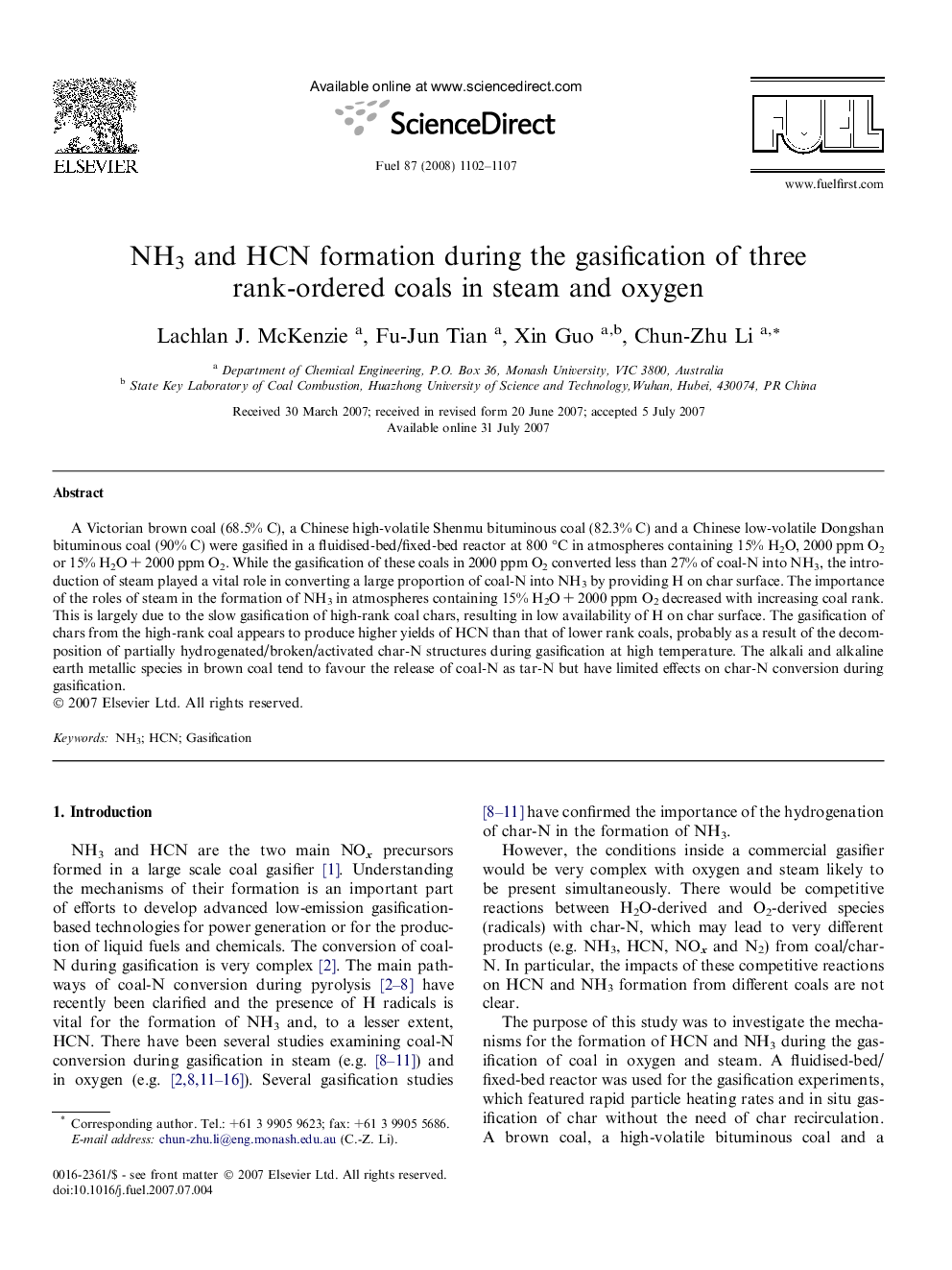| Article ID | Journal | Published Year | Pages | File Type |
|---|---|---|---|---|
| 208011 | Fuel | 2008 | 6 Pages |
A Victorian brown coal (68.5% C), a Chinese high-volatile Shenmu bituminous coal (82.3% C) and a Chinese low-volatile Dongshan bituminous coal (90% C) were gasified in a fluidised-bed/fixed-bed reactor at 800 °C in atmospheres containing 15% H2O, 2000 ppm O2 or 15% H2O + 2000 ppm O2. While the gasification of these coals in 2000 ppm O2 converted less than 27% of coal-N into NH3, the introduction of steam played a vital role in converting a large proportion of coal-N into NH3 by providing H on char surface. The importance of the roles of steam in the formation of NH3 in atmospheres containing 15% H2O + 2000 ppm O2 decreased with increasing coal rank. This is largely due to the slow gasification of high-rank coal chars, resulting in low availability of H on char surface. The gasification of chars from the high-rank coal appears to produce higher yields of HCN than that of lower rank coals, probably as a result of the decomposition of partially hydrogenated/broken/activated char-N structures during gasification at high temperature. The alkali and alkaline earth metallic species in brown coal tend to favour the release of coal-N as tar-N but have limited effects on char-N conversion during gasification.
